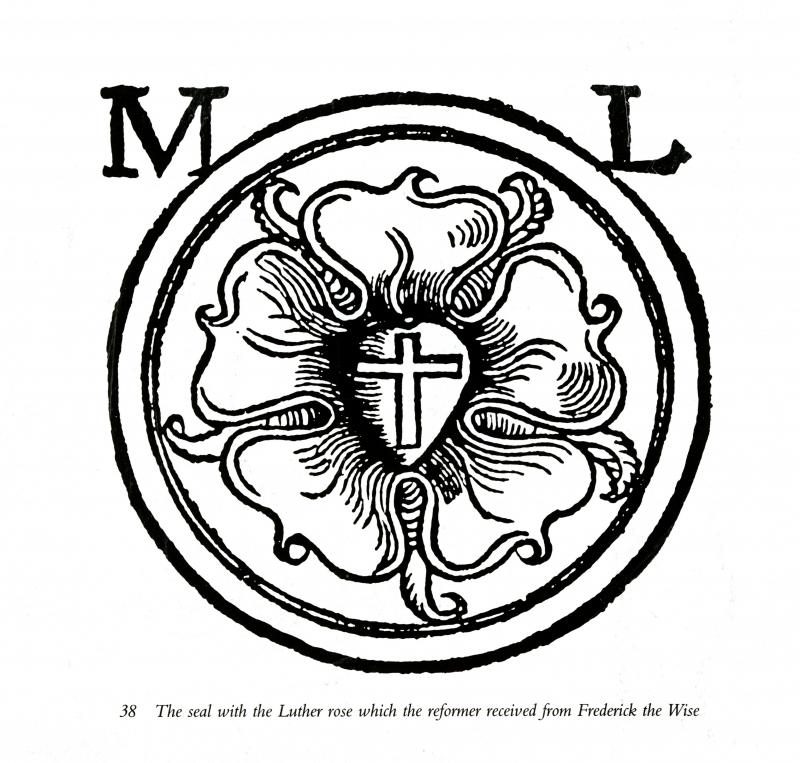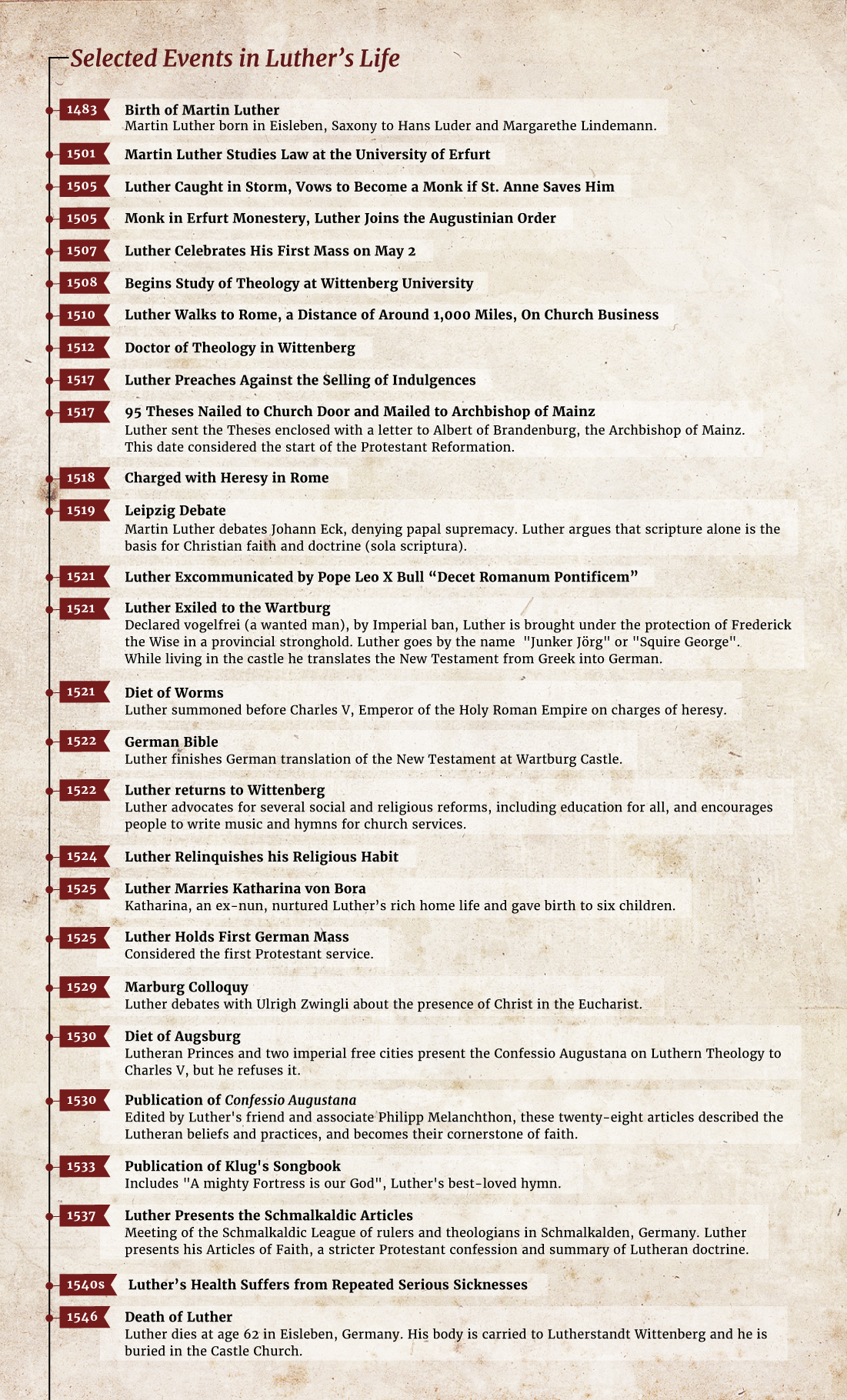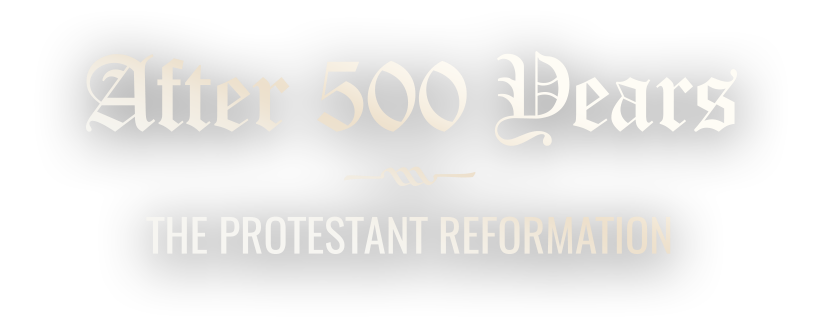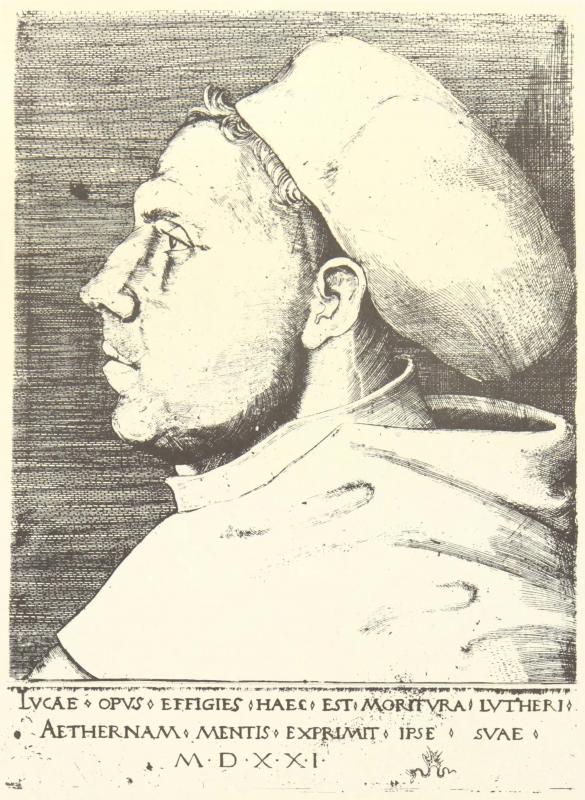Luther's Life & Theology
Martin Luther’s was by no means the only voice calling for reform of the Catholic Church in the late Middle Ages, but his voice spoke in German as well as Latin, and it resounded at a moment of great receptivity among the people. They marveled at his boldness. Additionally, he drastically simplified the complicated demands of the Church: have faith in the atoning power of the crucified Christ; be guided solely by Scripture in your living and your belief. That even the peasant rebels of 1524-1526 harkened (or thought they did) to the Wittenberger is revealed in the best known list of grievances called “The Twelve Articles of Memmingen.”
Luther was born the son of a former farmer and a lessor of copper-mining shafts. After joining the Augustinian Eremites, Martin took advanced degrees in Bible (1509) and theology (1512) at the new Saxon University of Wittenberg. His regular contact with the electors of Saxony, first Frederick the Wise (d. 1525), then Johann the Constant (d. 1532), elevated his profile yet further, and their support ensured his personal safety. As he lectured on biblical books during the 1510s, his thought perceptibly developed away from that of the dominant Scholastic theologians of his era. His scrutiny of the Bible showed him that the Catholic theology of purgatory and indulgences had no scriptural basis. His "95 Theses against Indulgences" of 1517 are usually seen as the beginning of the Protestant Reformation. He established a ground on which his God and he could meet on friendly, even loving, terms. His declaration of conscience at the Diet of Worms in 1521 may be seen as the confirmation of his evolution into a Reformer of continent-wide import.
During the 1520s, while developing his thought structures further, Luther dreamed of effectuating a Christian society in accordance with his values. With the support of his princes, he wrote about universal elementary education and community chests for the relief of poverty. He took part in drafting guidelines for ordinary pastors and in parish visitations. He composed German liturgical hymns and catechisms for the guidance of simple clergy, ignorant adults, and youth. Requests for his judgment from every level around the realm overburdened him, and he looked forward to the existence of Evangelical consistories and other agencies that would finally provide relief.

Luther Rose or Luther Seal, received from Frederick the Wise and used by Martin Luther in his publications.
At the same time, he brought his private life more closely in line with his vision for Christian society: he married Katharina von Bora (1499-1552), a former nun; begat his and Katharina’s first children; and presided over a burgeoning household. He adored his wife and his offspring, albeit his views of women were traditionally misogynistic. Rebel though he was, Luther remained a man of his time.
Two events mark the culmination of a decade of high creativity: the Augsburg Confession and the publication in 1534 of the complete Deutsche Bibel. Luther often worked in tandem with his closest colleague and friend, Philipp Melanchthon. Inasmuch as Luther could not risk crossing the border out of his ruler’s lands to attend the 1530 Diet of Augsburg but remained in the Coburg Fortress on the territorial western edge, Melanchthon played the leading role in writing a definitive summary of Lutheran theology—in regular consultation with his colleague in Coburg. This document, which the Holy Roman Emperor Charles V rejected, remains one of the foundational texts of Lutheranism to this day. Similarly, all subsequent biblical translations made for German Lutheran use up till today take Luther’s master work of linguistic conversion as their basis. Luther’s gifts of verbal expression were many.
Although Johann Bugenhagen and not Martin Luther was the pastor at St. Mary’s Church in Wittenberg, the latter often relieved or substituted for the former in the pulpit. Partly owing to the copying of deacon and famulus Georg Rörer, thousands of the Reformer’s sermons have survived. Some of these take the form of systematic expositions of books of the Bible, such as Genesis, whereas others conform to the pericopes of the inherited church calendar. At the same time, the professor continued to hold forth in his university’s lecture halls. His written legacy to posterity is immense.
As his life moved toward its conclusion, Luther grew discouraged and pessimistic. He wrote a violent treatise against the Jews—who had not converted as he had hoped. He had been confident that his preaching and writing of the true Word of God would work the conversion of most Christians to his point of view. Yet his opponents seemed legion—whether Sacramentarians, Anabaptists, or intractable Catholics. Even the Wittenbergers themselves were indifferent to his teachings and persisted in their commission of visible sins. His faith, his wife, and his friends sustained him. Music and beer rewarded his perseverance each day. He knew that the Last Judgment was close at hand.
Luther died by chance in Eisleben, the city of his birth. As he faded, his faith sustained him. The artist Lucas Furtenagel was able to draw his visage with a slight smile, his hands crossed across his breast. This drawing showed the world that Luther affirmed his teachings to the end, was happy with them, and was ultimately destined for the presence of God.

To cite text:
Karant-Nunn, Susan, & Lotz-Heumann, Ute (2017). Confessional Conflict. After 500 Years: Print and Propaganda in the Protestant Reformation. University of Arizona Libraries.
Selected titles from University of Arizona Special Collections:
Johann Aurifaber (1519-1575). Tischreden, Wiesbaden, 1981 (Facsimile of 1566 Eisleben edition)
Johann Georg Walch (1693-1775). Samtliche Schriften, Halle, 1740-1753
Jean H. Merle d’Aubigné (1794-1872). Illustrations of the life of Martin Luther, London, 1862
Gustav F. L. König (1808-1869). Dr. Martin Luther der deutsche Reformator, Gotha, ca. 1858

